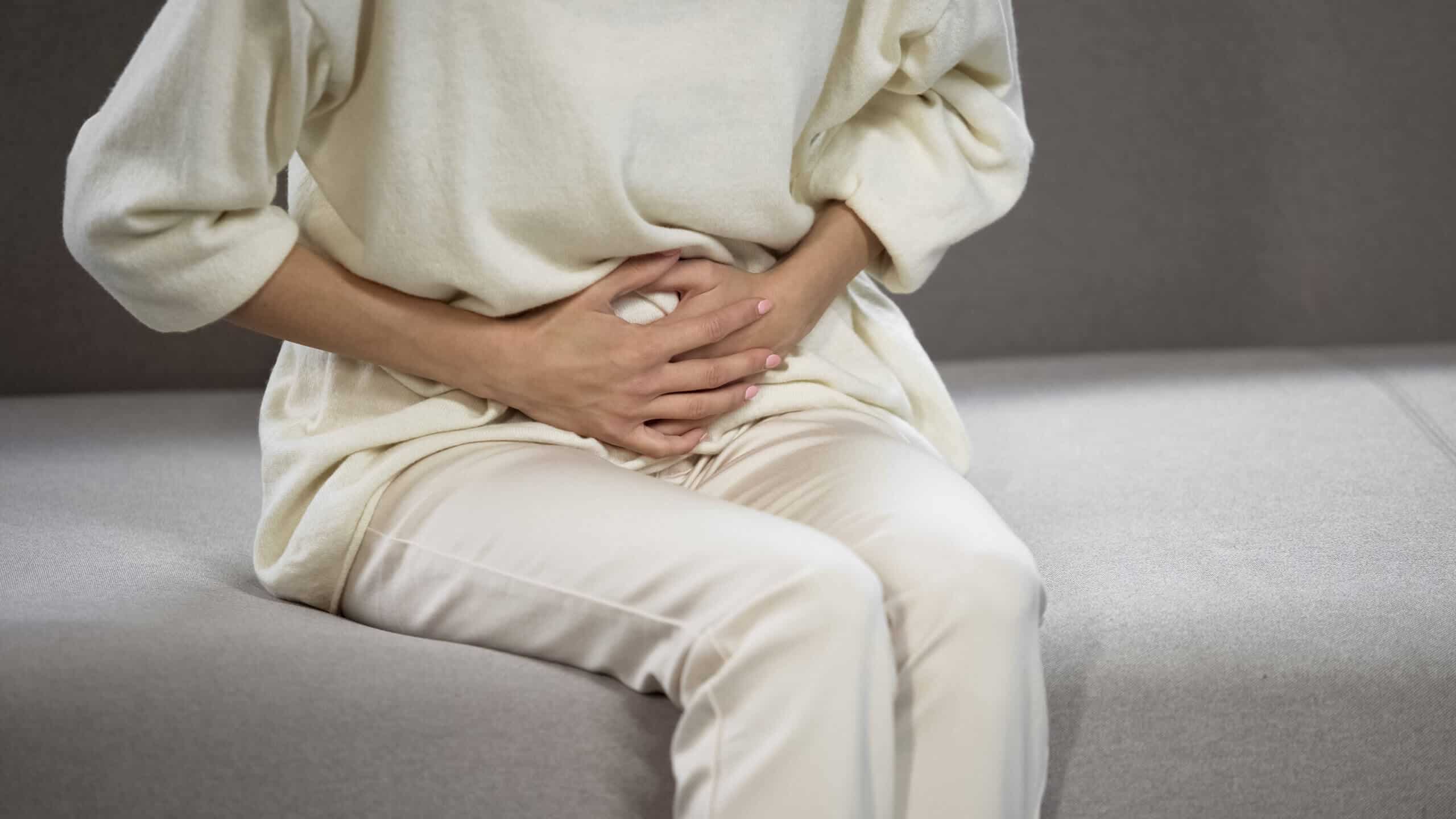Both endometriosis and PCOS can present themselves with a wide range of symptoms, which can make these conditions difficult to diagnose. For people suffering from these conditions, uncertainty about what they’re experiencing causes even more concern.
Here we detail what PCOS and endometriosis are – and their symptoms. In addition, we answer some of the most commonly asked questions about these conditions, including whether somebody can have both at the same time.
What is PCOS and its symptoms?
Women with polycystic ovary syndrome (PCOS) often have polycystic ovaries, characterised by numerous small follicles that resemble cysts on the surface of the ovaries. These cysts are undeveloped egg-containing follicles and are typically less than 8 mm in size.
However, PCOS symptoms extend well beyond these cysts and can include:
- Fertility problems
- Irregular periods or an absence of periods
- A greater chance of developing high blood pressure or diabetes during pregnancy
- Metabolic syndrome (a combination of diabetes, high blood pressure and obesity)
- Problems with weight, including rapid weight gain and issues with losing weight
- Hirsutism (unwanted facial or body hair)
- Alopecia (hair loss or thinning hair)
- Acne and/or oily skin
The condition usually appears in the late teens or early 20s, which can mean regular coming of age signs can be mistaken for PCOS – or vice versa. As well as acne, teenagers can often have irregular periods in the years following their first period.
As well as analysing your medical history, doctors might decide to undertake a pelvic exam, an ultrasound of your ovaries and uterus, and/or blood tests to determine your androgen levels.
What is endometriosis and its symptoms?
Endometriosis is when tissue similar to the lining of the womb grows in places outside of the uterus, such as the ovaries and fallopian tubes. This tissue can often flow through fallopian tubes into the pelvic cavity during periods (termed retrograde menstruation), but the immune system usually takes care of it.
That’s the primary difference between PCOS and endometriosis. PCOS is caused by abnormal hormone behaviour, rather than a tissue disorder. Under normal circumstances, in the womb, this tissue sheds and bleeds during the menstrual cycle.
However, if this tissue appears elsewhere in the reproductive system – or even outside of it – there can be significant problems when it bleeds and this blood tries to leave the body. These problems can include heavy bleeding, painful periods, inflammation, pain during or after sex, fatigue or pain during bowel movements. Endometriosis can also spread to the pelvic area.
PCOS, on the other hand, usually causes more visible symptoms than endometriosis.
What are the similarities between PCOS and endometriosis?
There are certain similarities between PCOS and endometriosis. However, there are many more differences than similarities and the conditions require very different approaches to treatment and management.
Similarities between the two conditions include fertility issues and heavy bleeding, both of which are commonly experienced. Plus, both conditions are incurable and both affect around 1 in 10 women in the UK.
Other than these few common points, PCOS and endometriosis do not share much else and one condition cannot be mistaken for the other. For instance, women with endometriosis experience especially painful periods, whereas PCOS sufferers might not have periods at all, or they could be quite irregular. Plus, there are no weight or metabolic issues associated with endometriosis, which tends to cause less visible symptoms.
Is it possible to have both PCOS and endometriosis?
Yes, it is possible to have both conditions, since they’re distinct conditions with different causes.
And because both can have a profound effect on your chances of conceiving a baby, having both at the same time can cause understandable mental strain – as well as significant physical issues.
If you do suffer from both PCOS and endometriosis, it’s vital to remember that they’re very distinct conditions – and must be treated as such.
How common is PCOS vs endometriosis?
Both endometriosis and PCOS affect around 1 in 10 women of childbearing age. Globally, that adds up to millions of women, many of whom go undiagnosed.
Those difficulties with diagnosis are partly caused by the fact that women with PCOS or endometriosis experience various symptoms, many of which can point to other conditions. Many cases are only uncovered when fertility problems arise. The prevalence of PCOS and endometriosis means that they’re among the leading causes of female infertility.
It’s uncommon for women to have both conditions at the same time. And although some studies have suggested sufferers of one condition are more likely to have the other condition, more research on this topic is needed.
What are the causes of endometriosis?
There is no definitive answer to the question of what causes endometriosis. However, science has pinpointed some possible explanations for the condition. They include:
Retrograde menstruation
This is when tissue that would normally line the womb flows through the fallopian tubes into the pelvic cavity. It then causes pain when it tries to leave the body through bleeding. Usually, the immune system would deal with the issue, which is why immunosuppressed people might be more susceptible to endometriosis.
Coelomic metaplasia
Sometimes, cells act in unexpected ways, such as when they turn into endometrial cells far from their home in the uterus.
Endometrial cell transport
Even when they start in the uterus, endometrial cells can sometimes be moved to other areas of the body by blood vessels or the lymphatic system.
Post-surgery implantation
Following some surgeries, such as a hysterectomy, endometrial cells can implant themselves elsewhere.
What are the causes of PCOS?
The causes of PCOS are far from certain, but recent research has found evidence for various contributing factors. They include:
Genetics
PCOS is known to run in families, which means if close female relatives like your mother, sister or aunt have it, your chances of developing PCOS are greater.
Insulin resistance
If you’re insulin resistant, your body will produce extra insulin to compensate, causing the ovaries to produce surplus testosterone. In turn, this added testosterone will interfere with normal ovulation.
Hormonal imbalances
As well as testosterone, imbalances in other hormones are suspected of contributing to PCOS. One of them is sex hormone-binding globulin (SHBG), which can’t moderate testosterone properly when there’s not enough of it. Luteinising hormone (LH) stimulates ovulation, but raised levels might change normal ovary operation.
Gut bacteria
It’s known that women with PCOS have different gut bacteria, with insufficient nutrient absorption. There are sometimes knock-on effects for myo-inositol absorption, insulin control and inflammation.
Inflammation
Most women with PCOS have higher levels of inflammation. Chronic inflammation and PCOS are both linked to type 2 diabetes and obesity. Making lifestyle changes to reduce inflammation can, therefore, help with PCOS symptoms and associated health conditions.
PCOS and endometriosis treatment options
Although neither PCOS nor endometriosis can be cured, the symptoms can be managed to improve your everyday quality of life.
If you have PCOS, losing weight can make a huge difference. The NHS says that shedding just 5% of your body weight can significantly improve PCOS symptoms. While taking the contraceptive pill can also contribute to combating symptoms.
In addition, using a supplement like inofolic alpha can have numerous benefits if you have PCOS.
For endometriosis, pain medication like ibuprofen will not only make you more comfortable: it can also help with inflammation. Many women find the combined contraceptive pill effective since it can make periods lighter and less painful. And hormone-inhibiting treatment is another potential route, particularly medication that cuts oestrogen levels and, therefore, the growth of endometrial tissue.
Sometimes, surgery is used to burn this excess endometrial tissue away. And in some extreme cases, a hysterectomy might even be needed to prevent painful endometriosis symptoms.
While there are some crossover symptoms between endometriosis and PCOS, they’re very distinct conditions and women can, unfortunately, have both.
However, understanding of these conditions is improving all the time and there are various treatment options available to make symptoms more manageable.








